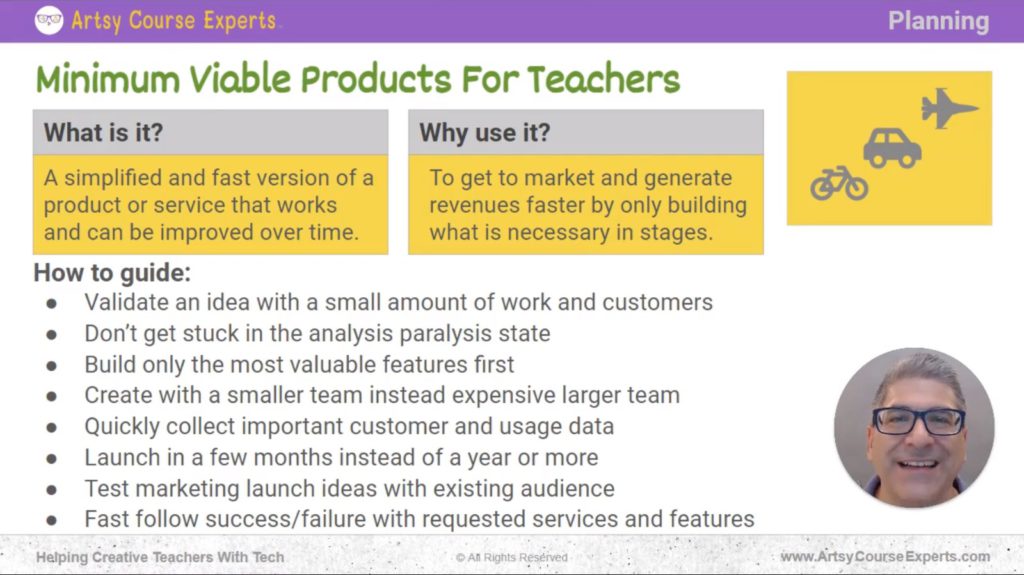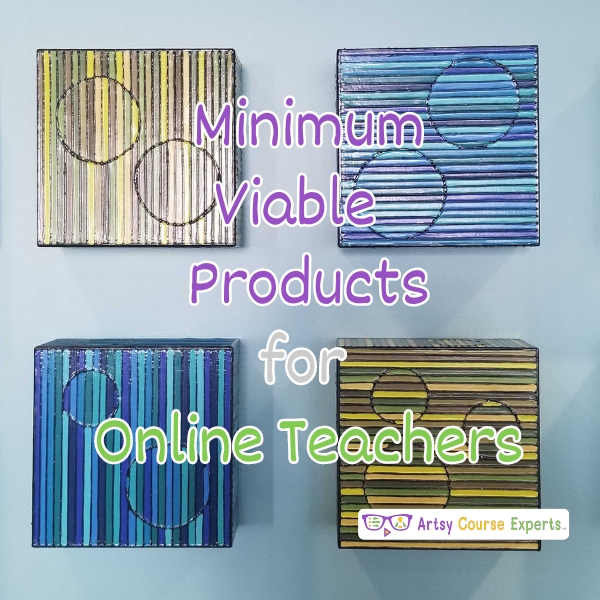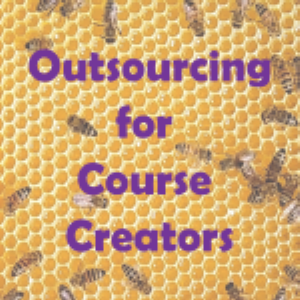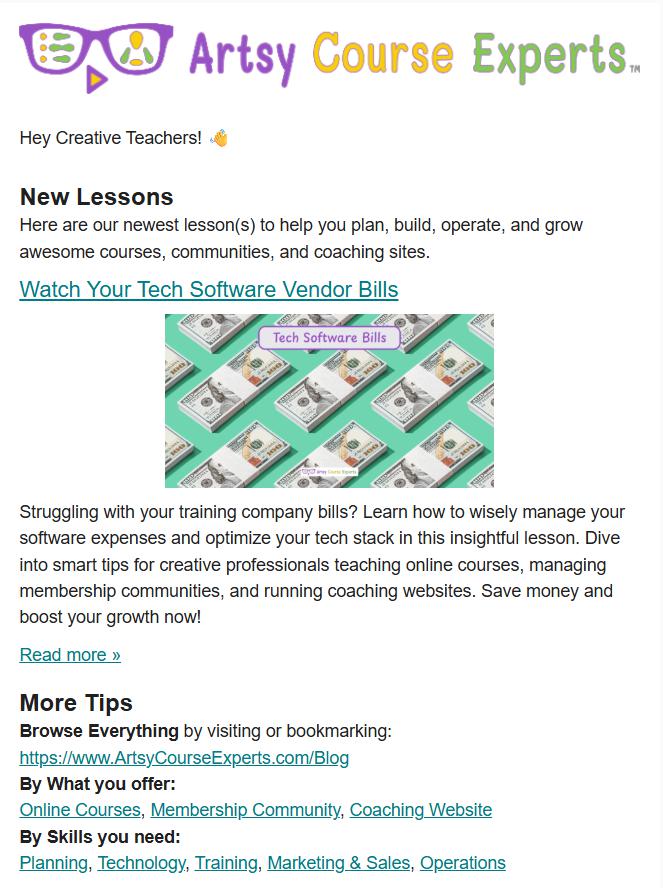Introduction
Are you finding it challenging to streamline the process of building your products and services? In this lesson, we’re going to discuss Minimum Viable Products (MVPs) for online course teachers. With MVPs, you’ll be able to create courses, websites, communities, webinars, and more much faster than before. Let’s delve into the concept of MVP and how it can benefit you.
We will cover the basics of minimum viable products, including what they are, why you should use them, and how to implement them. Additionally, we’ll provide an example of applying this concept to e-learning. Finally, we will summarize our top tips for effectively using MVPs.
Challenges online course creators can face if they don’t use Minimum Viable Products for their online courses:
- Course creators may struggle to keep students engaged throughout the course.
- Building complete courses without MVPs can be a time-intensive process.
- Developing full courses upfront can strain limited resources, both time and budget.
- MVPs help identify and address learning gaps which may be missed.
- Courses may become outdated without the adaptability that MVPs provide.
Video Lesson – How To Create Courses, Websites, Communities, Webinars, and More Much Faster Than Before.
Who Can Use?
Almost any kind of teacher or professional can use Minimum Viable Products to gather feedback and refine their visual concepts efficiently.
- To publish smaller portions of their course content so they can test the demand and effectiveness of their material before investing in a full course.
- To build MVP galleries or tutorials, allowing them to gauge interest in their work and adjust their course content accordingly.
This can work for a wide range of professionals like graphic designers, writers, and photographers.
What Is It
An MVP is a simplified and quickly developed version of a product or service that works and accomplishes the main goal and it can be improved over time. Minimum Viable Products (MVPs) for teachers refer to the development and implementation of the most basic and essential elements of an educational product or approach. MVPs in the context of teaching are designed to serve as experimental prototypes or initial versions of teaching materials, methods, or tools.
The primary purpose of MVPs for teachers is to test, validate, and refine innovative teaching strategies, resources, or technologies in a cost-effective and time-efficient manner.
Why Use It?
The benefits of using an MVP are that you get to market quickly, and you’re generating revenues rapidly by building only what is necessary in stages. So, instead of constructing a massive product or service, you’re developing the initial version that addresses a problem customers are willing to pay for. This approach enables you to enter the market swiftly and refine the product over time without investing in features that customers may not desire.

How To Guide
Let’s delve into a how-to guide and explore a couple of key principles for creating Minimum Viable Products.
Validate an Idea with Minimal Effort and Customer Feedback
First and foremost, you can validate an idea with minimal effort and a small customer base. You don’t require a large customer pool, nor do you need to invest two years in building the ultimate product. Instead, you can create a scaled-down version with a limited number of customers to ensure that people find it appealing. This approach helps you confirm that your product or service has potential before making substantial investments. You can use an MVP to validate the core concept of your offering.
Avoid Analysis Paralysis
With an MVP, your focus is on building the most valuable features first. You avoid spending time on secondary or tertiary features that may or may not be used by the majority of your customers. Instead, you identify what is most important for the product or service, ensuring it meets the needs of the largest number of people and is executed effectively. This selective approach is another aspect of MVP development.
Create a Smaller Team Instead of an Expensive Larger Team
The MVP approach also enables you to create a smaller team rather than an expensive, larger one. With just a few people, you can develop the core product you need. If it proves successful, you can evolve it to include more advanced features. For example, avoid complex video edits or the creation of the ultimate resource guide. Instead, start with a Word document, Google Sheets, or Google Slides.
Your small team can proceed to build the course, community, or webinar content. You can create the initial version and, if it works, expand from there. Avoid getting stuck in the development of an extensive, so-called “perfect” product that could take many months or even years to complete. Instead, create a more compact version that fulfills 80% of what your prospects and customers require.
Quickly Collect Important Customer and Usage Data
The advantage of MVP is its ability to swiftly gather crucial information about your customers, their usage patterns, and their needs, including various use cases. You don’t have to wait for a year or more to launch a product only to discover they need a slight variation.
With the MVP or Agile approach, you can provide those initial essential features and see if they benefit your customers. Engage with your audience and gather feedback from your customers. Using this input, you can proceed to develop additional features without wasting time and resources on building things that may not align with their interests. Furthermore, you will gain rapid insights into your customers’ preferences.
Launch in a Few Months Instead of a Year or More
One of the significant advantages of the minimum viable product approach is the ability to launch within a few months instead of a year or more. This not only saves you money but also valuable time. It enables you to learn faster, fail faster, and quickly make corrections, ultimately leading to faster success.
Rather than embarking on massive projects that could consume a year or more, focus on building out the minimum viable product. Identify those key features and benefits necessary for your course, community, or coaching website, and launch it. Start learning, take action, and gradually level up, as opposed to working in isolation for extended periods without knowing if your efforts will bear fruit. This approach allows you to pivot when needed.
Test Marketing Launch Ideas with an Existing Audience
The MVP approach also offers the opportunity to test marketing ideas with an existing audience. You can experiment with various approaches, such as promotions, videos, webinars, and different ways of promoting your product or service. You can even consider cross-promotion, offering promotions at the end of one course for another, or expanding your community.
By experimenting and testing these approaches, you can quickly learn about the flow’s effectiveness. This includes tracking metrics like click-through rates and conversion rates, all without finalizing the ultimate price since it’s your first version, your minimum viable product.
You can determine conversion ratios, understand the percentage of people interested in upsells, and observe how your sales page performs. This iterative process allows for adjustments and future improvements, rather than starting with complex A/B testing right away. The key is to get your e-learning product out there, start testing, and continuously learn and evolve – the core benefit of minimum viable products.
Fast Follow Success/Failure with Requested Services and Features
Finally, with minimum viable products, you can quickly respond to both success and failure, along with requested services and features. You launch your product, learn from it, and gather feedback. You might hear requests like, “Could you add this?” or “This lesson is missing something.” For example, someone might suggest adding a chat room for a specific design topic. You can receive all this input. Having already launched, your active customers tell you what they need, and you can promptly incorporate those additional features.
This approach is advantageous because it prevents you from building things your customers may or may not want. Instead, you have launched and engaged customers by providing valuable input, and you invest your time and resources wisely. This strategy sets you up for success as you gradually add more products and services.

MVP Examples in the E-learning Space
Now, let’s check out some examples of using the minimum viable product approach in the e-learning space. We’ll discuss a few services and contrast the traditional way of building them with the MVP approach for each one.
Online Course
In online courses, you might spend months writing scripts and countless hours on video editing. Months may pass as you create resources, or you might be planning an intricate launch event. However, with the MVP approach, your course might comprise just three to five modules. You could opt for simple Loom videos instead of a more complex video recording studio approach. You may delay the inclusion of resources or a PDF until you have a clearer idea of what should be in them. You might start with a one-pager.
Using an MVP approach for your online course, you can launch it simply and inform your existing audience, skipping the grandiose launch. Save the extensive marketing campaigns for later if your course proves to be a success and resonates with your audience.
Online Community
Suppose you’re running a writing community. You might have opted for the traditional approach of creating a detailed, lengthy sales page, complete with testimonials. However, the authenticity of these testimonials may be questionable as they aren’t specific to your community. Crafting the ultimate sales page becomes challenging when you lack all the details conventionally. You may have created over 20 chat rooms covering various writing topics, from securing a sci-fi book deal to children’s writing, reflecting your struggle to pinpoint your precise audience or community angle.
Additionally, you may have introduced numerous pricing tiers, considering various permutations. These challenges often accompany the approach of aiming for a grandiose launch in designing an online community. In contrast, an MVP approach would lead to a simpler sales page. It might feature just three or four sections outlining the community’s purpose, your role in running it, some frequently asked questions and pricing details.
Rather than starting with dozens of chat rooms, you’d initiate with a minimal number, perhaps three, and include one for support. This would help you launch the community and observe what topics members are discussing. You can always add more chat rooms in the future if needed, but these would align with your expertise and the community’s direction.
An MVP approach may start with a single pricing plan, without the complexity of annual options. This simplicity would expedite the launch of your online writing community or any other community you plan to establish.
Training Webinar
As a teacher or coach, you might consider launching a training webinar. Let’s assume you’re conducting a webinar for audio editors. In such cases, you may think that investing in an elaborate template or slide design is necessary, but it’s not. You can easily make use of a basic template.
Rather than creating an extensive slide deck with 60 slides, which can take months to prepare, consider that a webinar for audio editors might work just as effectively with a mere five slides. Break down the essential points, test the webinar with your audience, ask questions, and based on their responses, revise, expand, or refine your slides. Launching your webinar with just five slides is feasible.
While you may have a detailed script for every slide, an MVP approach might encourage you to use bullet points and speak naturally. You’re the expert in your field, and you’re guiding your audience through various aspects of audio editing tools or finding jobs in audio editing for movies or whatever your specialization is. Thick, detailed scripts may not be necessary; a few talking points in your notes can suffice.
In your training webinar, it could be beneficial to demonstrate certain tools or showcase how to create resources, templates, or examples. While traditional webinars often involve creating assets and samples to engage the audience, an MVP approach allows you to focus on the essentials and keep it simple. You can even conduct freestyle open questions and answers at the end of your webinar.
After presenting your slides and perhaps showing some screenshots, wrap up with a Q&A slide, inviting your audience to ask questions. You can complete your webinar in a matter of weeks, rather than the many months or half a year it might take with a traditional approach.
The MVP approach offers a valuable strategy, especially when you’re venturing into new territory and want to test the waters. Start with an MVP version, launch it, learn from the experience, and experiment. Later, you can consider adding more features and secondary benefits as needed.
Frequently Asked Questions About Minimum Viable Products for Teachers

Summary – Minimum Viable Products for Teachers
The concept of Minimum Viable Products (MVPs) is a powerful approach for teachers seeking to innovate in their educational endeavors. It’s about rapidly creating essential features that cater to your students’ needs. The beauty of MVP lies in the invaluable feedback it generates from your students. This feedback drives your growth, enabling you to enhance your products and services based on what your audience desires most.
This iterative process ensures that you can expand, evolve, and potentially add more team members to develop a more comprehensive and refined educational experience. The staged approach helps you avoid lengthy and costly development cycles by allowing you to launch quickly. If you discover that adjustments are needed, MVP empowers you to adapt, refine, or even pivot as necessary.
Tips for creative online course creators when using Minimum Viable Products:
- Begin with a basic version of your course, get it out in a few months, and start learning from your students.
- Encourage feedback from students, analyze their responses, and use this information to shape the next iteration.
- Avoid spending a year building a complex course. Keep iterating on your MVP to match your students’ evolving needs.
- Aim to launch within three months to test your course’s viability, learn from the results, and continue improving it.
- Adapt your course based on feedback and trends in the online learning space to stay relevant.
- Prioritize features and content based on what your students find most valuable to create a tailored learning experience.
You should be a little smarter now. Thanks for hanging out!
Please subscribe to get more tips for creative online course teachers.
More Tips For Online Teachers
These lessons can also help you with Operations and Technology:
- Sell More By Increasing Buyer Confidence
- How to Create a Product Ladder To Increase Sales
- Understanding Your Ideal Target Audience For Online Course Teachers
- Handling Course Maintenance And Outages
- How To Make A Teacher Bio That Sells
- Creative Course Glossary











